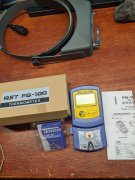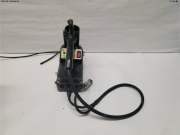Perry,
I was able to nail it down a little closer, but not exact.
Here's the latest I found the old school meters:
View attachment 62682
('61 Catalog)
And here's the earliest that I found the space age (rectangular) meter look:
View attachment 62683
('73 Catalog)
Note: It was hard to find much of any official Variac documentation from the late '60s? (Back then, did all the technical writers hop into a VW microbus, drive out to San Francisco, and hang out with Jefferson Airplane at Haight-Ashbury?)
So, instead of '48-'80, we now know that it happened at some point between the photos above. The cool thing? 50+ years from now both your Variac & mine should still be 100% ready for troubleshooting duty. I've worked with some Brits, and they would opine that Variac made some really solid kit.
FWIW --
3D





